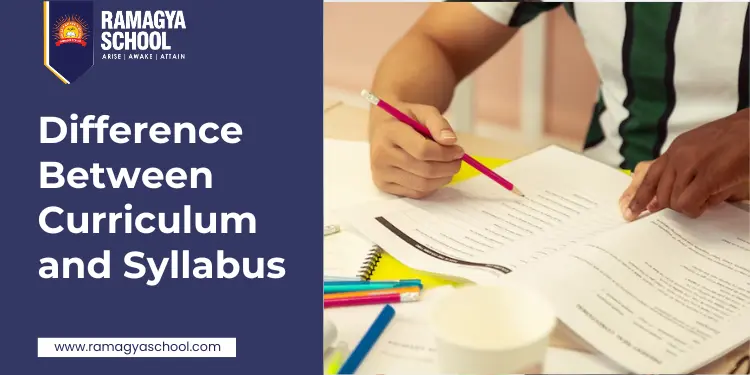Understanding the fundamental ideas that impact students’ learning is essential for navigating the educational terrain. In this way the terms “syllabus” or “curriculum” are commonly employed to refer to different but connected concepts. That is, the syllabus is focused on the specifics of each class, while the Curriculum is the overall framework that guides every aspect of the education process. Students, teachers as well as everyone else who is involved in the process of education should be able to distinguish between the two concepts.
The Curriculum outlines the general goals and structures of education programmes, the syllabus gives specific information on every course that forms included in the program. The syllabus acts as an instructional guide for students and outlines the objectives of the courses and their content as well as homework and rules. It contains important information about the syllabus of the course, assigned readings, grading guidelines and teacher expectations.
Difference Between Curriculum and Syllabus
Curriculum:
The following are some of a curriculum’s most crucial parts:
- Scope and Sequence: The Curriculum outlines the progression of experiences from basic to more complex subjects, providing an ongoing development of knowledge and abilities.
- Content Selection: A curriculum defines the content to be taught, based on the standards of education, learning goals as well as the needs of the students.
- Instructional Strategies: This phrase refers to a variety of methods of instruction as well as tools and exercises that are designed to improve student engagement and learning.
- Assessment and Evaluation: The Curriculum describes the standards by which students’ learning will be assessed, the kind of tests that will be used, and the procedures for giving feedback.
- Adaptability: The Curriculum must be sufficiently flexible to accommodate different types of learners, change to meet evolving educational requirements, and take feedback into account in order to allow for continual improvement.
- Diverse and Culturally Relevant: Curriculum exhibits the significance of cultural diversity by incorporating different perspectives and voices. Its experiences, and perspectives into the instructional materials and learning content.
The Curriculum functions as a guideline for educational programs. It provides the framework for planning how, when, and how to evaluate the learning and teaching activities.
The Curriculum includes content and assessments that are meant to help students achieve specific learning objectives in addition to a wide range of methods of instruction. It outlines the structure of learning activities, the selection of content, teaching tactics, and evaluation methods for various grades and classes. In essence the Curriculum provides the basis to plan the way that teaching and learning activities are executed, controlled and assessed within the context of a school or program.
Syllabus:
The most important components of a syllabus comprise:
- A Course Summary: The summary offers an outline of the course, including the course’s description, title, and goals, providing students with an idea of what they can expect from the course.
- Scheduling and Timelines: This syllabus provides the class schedule and the topics that will be covered, due dates, and exam dates to help students plan their studies efficiently.
- Course Policies: It sets goals for student behavior and performance as well as the teacher’s expectations for involvement, punctuality, and academic integrity. It also includes rules for grading and communication procedures.
- Required Resources: This syllabus outlines the required readings, textbooks materials, resources, and other materials required for the course, which allows students to purchase the required materials prior to class.
- The Assessment Information: It lists the many test formats that are utilized, such as project work and exams or quizzes, together with the weights assigned to each format in terms of final grade calculation. This gives insight into the evaluation procedure.
- Communication channels and office hours: With precise directions on how to get in touch with the teacher and when they’re available to help. The syllabus ensures that students succeed by fostering good learning environments and facilitating effective communication between students and teachers.
Conclusion:
In conclusion, even though both the syllabus and Curriculum are essential components of the process of education. They serve different purposes and serve different roles in guiding learning and teaching. The Curriculum serves as the overarching guidelines and goals for educational programs. It covers the scope, sequence and contents of the Curriculum across different grade levels and subjects. It establishes the guidelines for the lessons students are expected to be able to learn and accomplish throughout their academic career.
Through understanding the connection between syllabus and curriculum teachers can efficiently integrate course objectives into larger goals in education, which ensures consistency and coherence in the teaching. Students gain from having a thorough knowledge of the course’s expectations, prerequisites and learning outcomes helping them engage more deeply in their learning and attain academic achievement.
In the end, both the syllabus and the Curriculum can create a supportive learning environment[1] that allows students to learn, acquire capabilities, and meet their goals in education. The significance of both elements improves education quality and promotes student progress and achievement. This blog underscores the difference Between Curriculum and Syllabus.
Read our Article: Regular Schools vs The Sports School – What Are The Differences?



